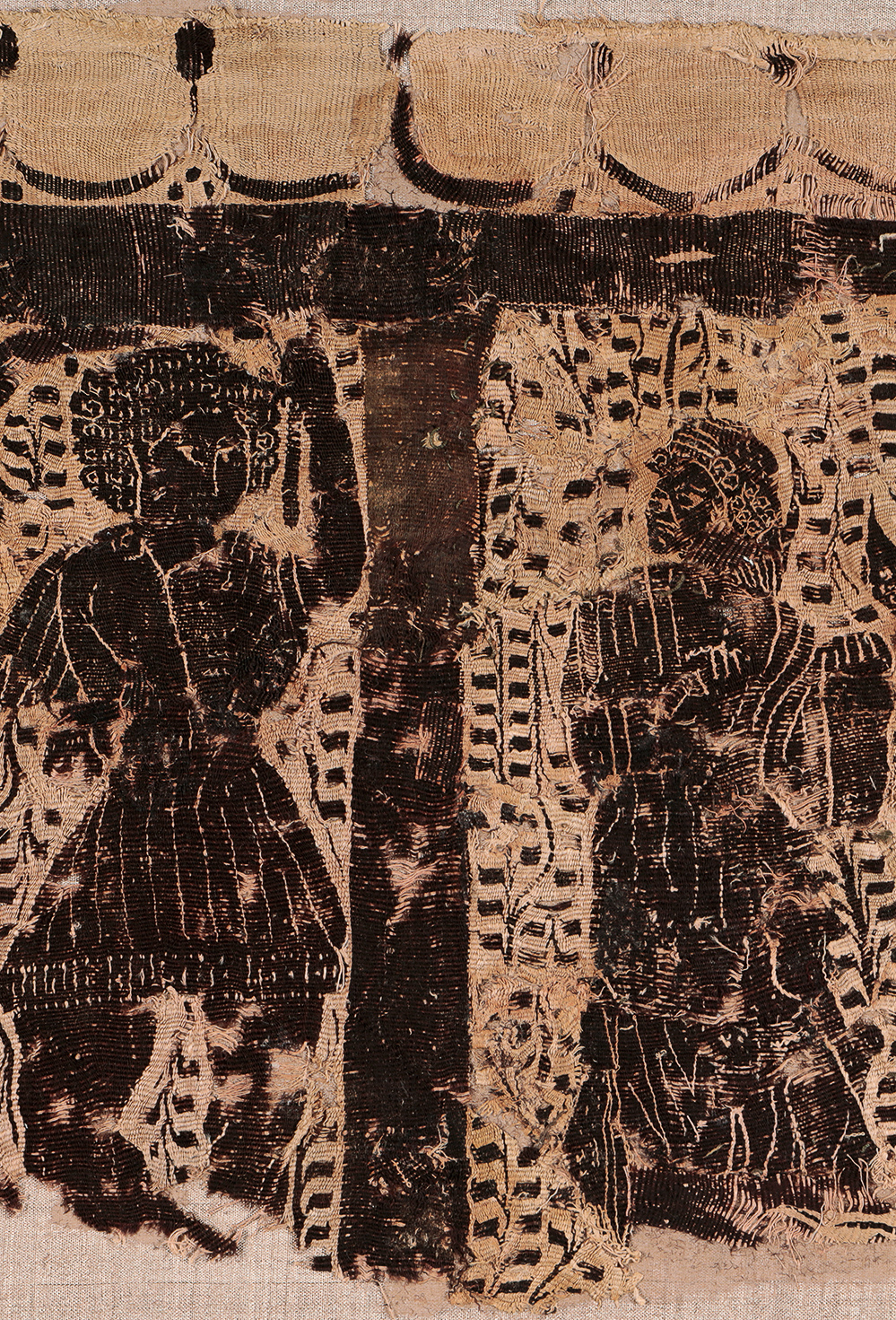The largest character, with curly hair, set between two women, is holding a long object (Dionysus with his thyrsus?). On the right is a satyr, recognisable from the horns on his head, which also suggests the scene can be linked to a Dionysian context.
Origin:
Egypt
Date:
4th - 6th century
Material:
Linen and wool
Dimensions:
Warp: 35 cm, weft: 19 cm
Comparisons:
Musée de Cluny, inv. Cl. 13156.
Musée de Cluny, inv. Cl. 16658: figures.
Provenance:
Collection Coptic textiles Fill-Trevisiol: donation
Location:
Musée royal de Mariemont
Tapestry originally inwoven in a tunic
Several textile fragments glued together, some parts are from the same weave. Bringing these different pieces together, no attention is paid to the direction of the warp: upper border: vertical direction of the warp; upper brown border: several fragments with warp in both directions; figures: warp mostly in horizontal direction, but with infills in vertical direction. The central brown column is not connected to the part with figures on the right
Warp:
natural-coloured linen S
Weft:
brown-purple wool Z: 92/cm, natural-coloured linen S
Weave:
extended tabby 2/3
Ribs per cm:
14
Special techniques:
slit tapestry, eccentric weft, flying thread brocading for details only, soumak
Dyes analysed:
Weftthread: brown-purple Z wool: madder, indigo/woad

